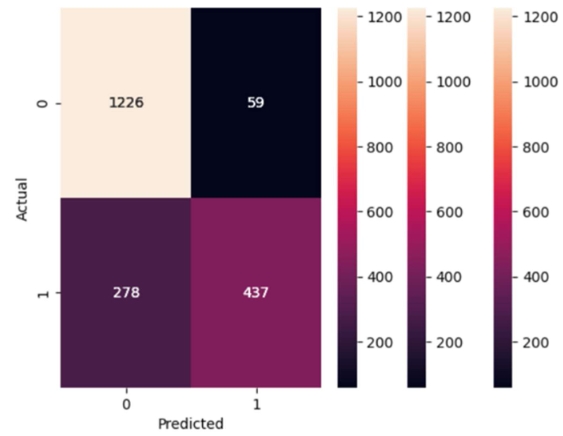Sociolinguistics of regional languages: An analysis of Javanese and Madurese usage among elementary school children in Jember, Indonesia
Abstract
This study analyses the patterns of Javanese and Madurese language use among primary school children in Jember, Indonesia, where the two ethnic cultures meet. Using a descriptive qualitative approach, data were collected through observations, interviews and questionnaires on 50 primary school students, 6 teachers and 10 parents from three different schools. Results show a clear diglossia between Indonesian for education and the regional language (Javanese/Madurese) for informal interaction. Children code-switch between these languages flexibly depending on the social context. Families play an important role in the maintenance of regional languages, while schools and digital media such as YouTube tend to encourage the use of Indonesian. Although regional languages are still strong, national/global influences are increasingly driving the use of Indonesian, reflecting the tension between local identity and national/global demands that children face. This research provides insight into the sociolinguistic dynamics in a region with two dominant languages.
References
[1]Parapat, S. H., Caniago, I. W., Suryani, I., Ariani, H., Siregar, T. H., & Yusnaldi, E. (2024). Keberagaman Sosial dan Budaya di Indonesia. JURNAL PGMI.
[2]Zamroni, A. (2021). Dinamika Interaksi Sosial Budaya Etnis Jawa dan Madura di Jember. Jurnal Sosiologi Reflektif, 15(2), 147-160.
[3]Aunurrofiq, A., Suyitno, I., & Nurchasanah, N. (2020). Pemertahanan Bahasa Madura di Wilayah Tapal Kuda. Linguistik Indonesia, 38(1), 75-90.
[4]Wisnu, G. B., Sunarya, I. N., & Sadyana, I. W. (2024). Language Choice and Identity Construction in Balinese-Javanese Bilingual Communities. International Journal of Language and Literary Studies, 6(1), 12-26.
[5]Ruge, H., Suryani, A., & Sukamto, K. E. (1999). Language death in progress: The case of the Lionese language in Flores, Indonesia. In Proceedings of the Third International Symposium on Language and Linguistics: Pan-Asiatic Linguistics (pp. 1118-1131).
[6]Alamsyah, S., Taib, R., Azwardi, A., & Idham, M. (2020). Language Maintenance and Shift: A Case Study of Acehnese-Malay Bilingualism. International Journal of Language Education, 4(2), 24-37.
[7]Udasmoro, W., Wijaya, Y., & Novanda, R. R. (2023). Language, Power, and Social Distance: A Study of Javanese Speech Levels in Contemporary Urban Settings. Journal of Language and Linguistic Studies, 19(1), 262-275.
[8]Rosyidi, A. W., Widodo, H. S., & Harsiati, T. (2018). Nilai Kesantunan dalam Bahasa Madura: Analisis Tingkat Tutur Enja'-Iya. Arkhais, 9(2), 87-94.
[9]Dolgenko, A. N., Kosyreva, M. S., & Bogoslovskaya, V. R. (2023). English Language: The Last Bastion of Globalization. Theory and Practice in Language Studies, 13(7), 1632-1637.
[10]Zubaidah, S., & Witarsa, R. (2022). Critical Period in Children's Language Acquisition: A Review of Theories and Practices. Early Childhood Education Journal of Indonesia, 5(1), 1-12.
[11]van Geel, M., Becker, T., & Schmeck, A. (2022). The Critical Period Hypothesis in Second Language Acquisition: A Multi-Faceted Review. Language Teaching Research Quarterly, 31, 40-52.
[12]Paturrahman, A. (2024). Analisis Perkembangan Bahasa dan Pemerolehan Bahasa Pada Anak. Innovative: Journal of Sosial Research, 4(1).
[13]Rickford, J. R. (2014). Situation and Audience in Linguistic Variation: The Case of Channel Islands. In P. Auer & J. E. Schmidt (Eds.), Language and Space: An International Handbook of Linguistic Variation (pp. 185-201). De Gruyter Mouton.
[14]Sridhar, K. K. (1986). Sociolinguistic theory and non-native varieties of English. Lingua, 68(1), 39-58.
[15]Auer, P. (2013). Code-switching in conversation: Language, interaction and identity. Routledge
[16]Woolard, K. A. (1985). Language Variation and Cultural Hegemony: Toward an Integration of Sociolinguistic and Social Theory. American Ethnologist, 12(4), 738-748.
[17]Woolard, K. A. (2020). Language Ideology. Annual Review of Anthropology, 49, 43-59.
[18]Muysken, P. (2000). Bilingual Speech: A Typology of Code-Mixing. Cambridge University Press.
[19]Fishman, J. A. (1991). Reversing language shift: Theoretical and empirical foundations of assistance to threatened languages. Multilingual Matters.
[20]Ogiela, L., & Montzka, T. (2021). Language Maintenance and Transmission in Immigrant Families: A Study of Polish-American Communities. International Journal of Bilingualism, 25(3), 531-544.
[21]Kilinc, M., Xhemajli, V., & Nallari, A. (2023). The Impact of Language Policy on the Educational Achievement of Multilingual Students. Journal of Language Teaching and Research, 14(3), 568-578.
[22]Betz, A., Lefebvre, E., & Weyers, J. R. (2013). Linguistic Code-Mixing in Online Media Content: A Case Study from the United States. University of Pittsburgh.
[23]Milroy, L. (1980). Language and Social Networks. Blackwell.
[24]Crystal, D. (2000). Language Death. Cambridge University Press.
[25]Faraclas, N. (2005). Globalization and the future of Creole languages. Journal of Language and Politics, 4(2), 331-365.
[26]Errington, J. (2008). Linguistics in a Colonial World: A Story of Language, Meaning, and Power. Wiley-Blackwell.
[27]Heller, M. (2010). The Commodification of Language. Annual Review of Anthropology, 39, 101-114.
[28]Language Ideology And Linguistic Landscape. (2008). Language Policy and Globalization in a Regional Capital of Ethiopia. In Linguistic Landscape (pp. 229-245). Routledge.
[29]Castells, M. (2010). The Power of Identity (2nd ed.). Wiley-Blackwell.
[30]Williams, C. (1994). Arfarniad o ddulliau dysgu ac addysgu yng nghyd-destun addysg uwchradd ddwyieithog [An evaluation of teaching and learning methods in the context of bilingual secondary education]. University of Wales, Bangor.
[31]García, O., & Wei, L. (2014). Translanguaging: Language, bilingualism and education. Palgrave Macmillan.
[32]García, O. (2009). Bilingual education in the 21st century: A global perspective. Wiley-Blackwell.
[33]Wei, L. (2018). Translanguaging as a practical theory of language. Applied Linguistics, 39(1), 9-30
[34]García, O., & Otheguy, R. (2020). Plurilingualism and translanguaging: Commonalities and divergences. International Journal of Bilingual Education and Bilingualism, 23(1), 17-35.
[35]García, O., & Kleyn, T. (Eds.). (2016). Translanguaging with multilingual students: Learning from classroom moments. Routledge.
[36]Creese, A., & Blackledge, A. (2010). Translanguaging in the bilingual classroom: A pedagogy for learning and teaching? The Modern Language Journal, 94(1), 103-115.
[37]García, O., & Sylvan, C. E. (2011). Pedagogies and practices in multilingual classrooms: Singularities in pluralities. The Modern Language Journal, 95(3), 385-400.
[38]Wei, L., & Martin, P. (2009). Conflicts and tensions in classroom codeswitching: An introduction. International Journal of Bilingual Education and Bilingualism, 12(2), 117-122.
[39]Canagarajah, S. (2011). Codemeshing in academic writing: Identifying teachable strategies of translanguaging. The Modern Language Journal, 95(3), 401-417.
[40]Zen, E. L., & Cahyono, B. Y. (2018). Translanguaging in a Content-Based Javanese Language Classroom. KnE Social Sciences, 3(9), 243-252.
[41]Indriani, D. (2020). Translanguaging practices in an EFL classroom: A case study in a senior high school in Semarang, Indonesia. Journal of English Education and Linguistics Studies, 7(1), 1-16.
[42]Creswell, J. W. (2014). Research design: Qualitative, quantitative, and mixed methods approaches (5th ed.). Sage Publication.
[43]Creswell, J. W., & Poth, C. N. (2017). Qualitative inquiry and research design: Choosing among five approaches (4th ed.). Sage Publication.
[44]Johnson, R. B., & Christensen, L. (2016). Educational research: Quantitative, qualitative, and mixed approaches (5th ed.). Sage Publication.
[45]Nazilatul Mifroh. (2020). Teori Perkembangan Kognitif Jean Piaget dan Implementasinya Dalam Pembelajaran di SD/MI. Jurnal Pendidikan Tematik, 1(3), 253-263.
[46]Bryman, A. (2016). Social research methods. Oxford University Press.
[47]Babbie, E. (2015). The practice of social research (14th ed.). Cengage Learning.
[48]Matthew B. Miles, A. Michael Huberman, & Johnny Saldana. (2019). Qualitative Data Analysis A Methods Sourcebook. SAGE Publications.
[49]Spradley, James P Elisabeth, & Misbah Zulfa Amirudin. (2022). Metode etnografi James P. Spradley ; penerjemah, Misbah Zulfa Elizabeth ; penyunting, Amirudin. Yogyakarta Tiara Wacana.
[50]Ferguson, C. A. (1959). Diglossia. WORD, 15(2), 325–340.
[51]Blom, J. P., & Gumperz, J. J. (1972). Social meaning in linguistic structures: Code-switching in Norway. In J. J. Gumperz & D. Hymes (Eds.), Directions in sociolinguistics (pp. 407–434). Holt, Rinehart & Winston.
[52]Myers-Scotton, C. (1993). Social Motivations for Codeswitching: Evidence from Africa. Clarendon Press.
[53]Gal, S. (1979). Language Shift: Social Determinants of Linguistic Change in Bilingual Austria. Academic Press.
[54]Eckert, P., & McConnell-Ginet, S. (1992). Think practically and look locally: Language and gender as community-based practice. Annual Review of Anthropology, 21(1), 461-488.
[55]Fishman, J. A. (1965). Who speaks what language to whom and when? La linguistique, 1(2), 67-88.
[56]King, K., & Fogle, L. (2006). Bilingual parenting as good parenting: Parents' perspectives on family language policy for additive bilingualism. International Journal of Bilingual Education and Bilingualism, 9(6), 695-712.
[57]Yamamoto, M. (2001). Language Use in Interlingual Families: A Japanese-English Sociolinguistic Study. Multilingual Matters.
[58]Bourdieu, P., & Thompson, J. B. (1991). Language and symbolic power. Harvard University Press
[59]Kulick, D. (1992). Language Shift and Cultural Reproduction: Socialization, Self, and Syncretism in a Papua New Guinean Village. Cambridge University Press.
[60]Errington, J. (1998). Shifting Languages: Interaction and Identity in Javanese Indonesia. Cambridge University Press.
[61]Lin, A. (2013). Classroom code-switching: Three decades of research. Applied Linguistics Review, 4(1), 195-218.
[62]Hornberger, N. H., & Johnson, D. C. (2007). Slicing the onion ethnographically: Layers and spaces in multilingual language education policy and practice. TESOL Quarterly, 41(3), 509-532.
[63]Cummins, J. (2005). A proposal for action: Strategies for recognizing heritage language competence as a learning resource within the mainstream classroom. Modern Language Journal, 89, 585-592.
[64]Phillipson, R. (1992). Linguistic Imperialism. Oxford University Press.
[65]Cunningham, S. (2001). Popular media as public 'sphericules' for diasporic communities. International Journal of Cultural Studies, 4(2), 131-147.
[66]Jones, R. J., & Cunliffe, D. (2020). 'Lol, I didn't mean it': Social media, language play and attitudes to minority languages. Journal of Multilingual and Multicultural Development, 41(1), 52-66.
[67]Rampton, B. (1995). Crossing: Language and Ethnicity among Adolescents. Longman.
[68]Bourdieu, P. (1977). The economics of linguistic exchanges. Social Science Information, 16(6), 645–668.
[69]Le Page, R. B., & Tabouret-Keller, A. (1985). Acts of identity: Creole-based approaches to language and ethnicity. Cambridge University Press.
[70]Labov, W. (1972). Sociolinguistic Patterns. University of Pennsylvania Press.
[71]Gumperz, J. J. (1982). Discourse Strategies. Cambridge University Press.
[72]Jakobson, R. (1960). Linguistics and Poetics. In T. Sebeok (Ed.), Style in Language (pp. 350-377). MIT Press.
[73]Giles, H., & Ogay, T. (2007). Communication Accommodation Theory. In B. B. Whaley & W. Samter (Eds.), Explaining communication: Contemporary theories and exemplars (pp. 293–310). Lawrence Erlbaum.
[74]Appadurai, A. (1996). Modernity at Large: Cultural Dimensions of Globalization. University of Minnesota Press.
[75]Cunliffe, D. (2019). Minority Languages and Social Media: Participation, Policy and Perspectives. In G. Hogan-Brun & B. O'Rourke (Eds.), The Palgrave Handbook of Minority Languages and Communities (pp. 451-480). Palgrave Macmillan.
[76]Cru, J. (2015). Language revitalisation from the ground up: promoting Yucatec Maya on Facebook. Journal of Multilingual and Multicultural Development, 36(3), 284-296.
[77]Robertson, R. (1995). Glocalization: Time-Space and Homogeneity-Heterogeneity. In M. Featherstone, S. Lash, & R. Robertson (Eds.), Global Modernities (pp. 25-44). SAGE Publications.
Copyright (c) 2024 Moh. Ferdi Hasan, Diana Monita, Aninditya Sri Nugraheni

This work is licensed under a Creative Commons Attribution 4.0 International License.









